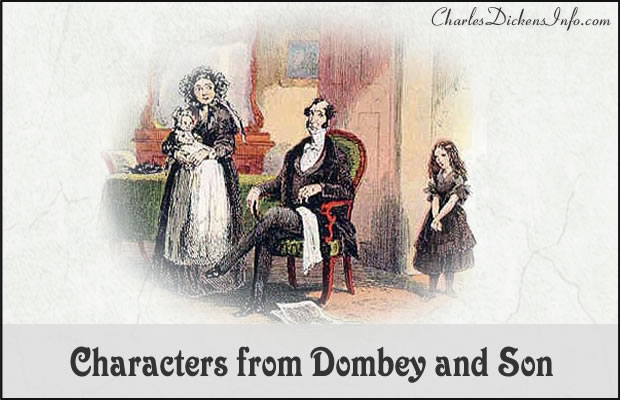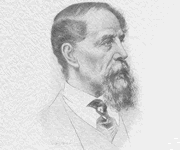Dombey and Son, Dickens’s seventh novel, deals with the topic of feminism. The novel shows what happens when Dombey has a daughter instead of the desired son.
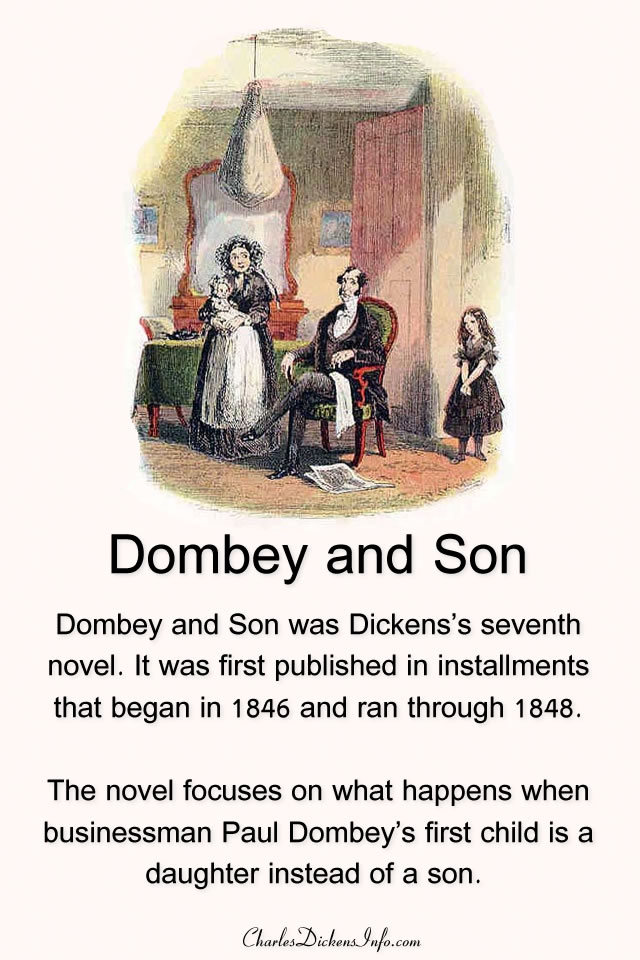
Dombey and Son
Last Updated July 27, 2025 – Originally Published July 5, 2012
Dombey and Son was Dickens’s seventh novel. It was first published in installments that began in 1846 and ran through 1848.
In Dombey and Son, Mr. Dombey, fixated on his desire for a male heir, dismisses his eldest child, a daughter, as inconsequential.
When the long-awaited son finally arrives, he too fails to meet Mr. Dombey’s expectations
Table of Contents
Dombey and Son – Dickens’s Life At The Time
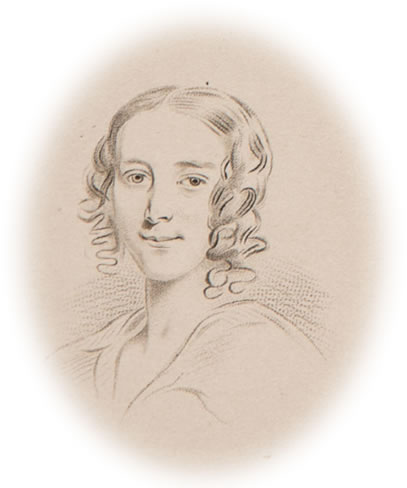
Fanny Dickens around 1842
In 1844, Dickens’s son Francis Jeffrey (Frank) was born. Dickens and family asso traveled to Italy that year and Dickens treated Madame de la Rue via mesmerism.
In 1845, Alfred, Dickens’s sixth child, was born.
Dickens and his family traveled to Lausanne, Switzerland in 1846. Publication of Dombey and Son began in that year.
In November of 1846, the Dickens family left Lausanne and traveled to Paris.
In February of 1847, the Dickens family left Paris ahead of schedule. They made an early return to England because Charley Dickens had scarlet fever. On April 18 Sydney Dickens is born to Charles and Kate.
Dickens’s sister, Fanny, died in September of 1848. That year also saw the publication of The Haunted Man, Dickens’s last Christmas book.
Theme of Dombey and Son
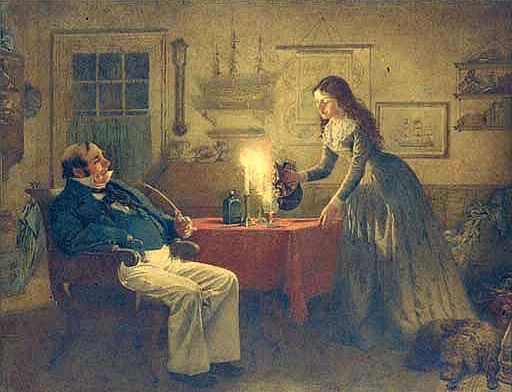
Captain Cuttle and Florence Dombey, illustration by Charles Green
If Dombey and Son, Dickens’s seventh novel, were written today people would say that it deals with the topic of feminism. Why? The focus of the novel is on what happens when Dombey has a daughter instead of the desired son.
Mrs. Dombey dies shortly after giving birth to her second child, a long-awaited son. The eldest Dombey child was a girl and Mr. Dombey didn’t see much use in daughters:
But what was a girl to Dombey and Son! In the capital of the House’s name and dignity, such a child was merely a piece of base coin that couldn’t be invested–a bad Boy–nothing more.
In the eyes of Mr. Dombey, marriage wasn’t about romance. It was more like a business arrangement. It was a business arrangement that at its best might produce the finest product of all, a son.
Mr. Dombey would have reasoned: That a matrimonial alliance with himself must, in the nature of things, be gratifying and honourable to any woman of common sense. That the hope of giving birth to a new partner in such a house, could not fail to awaken a glorious and stirring ambition in the breast of the least ambitious of her sex.
Throughout the novel Florence represents the virtues of love, understanding and tenderness. While Mr. Dombey represents business and logic. At the end of the novel Mr. Dombey finally turns to the love and affection that his daughter has been offering him all along.
“And so Dombey and Son, as I observed upon a certain sad occasion,” said Miss Tox, winding up a host of recollections, “is indeed a daughter, Polly, after all.”
The Beginning of Public Readings
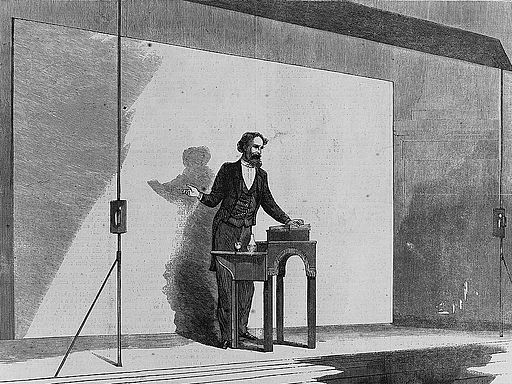
“Charles Dickens as he appears when reading.” Illustration in Harper’s Weekly, December 1867.
While Dickens was in Lausanne he gave a reading of the first installment of Dombey to some of his friends.
It went so well that he later wrote to his friend John Forster, “a great deal of money might possibly be made (if it were not infra dig) by one’s having Readings of one’s own books.” This germ of an idea became Dickens’s public readings.
In 1853 Dickens gave the first public reading of one of his works. He read A Christmas Carol for a charity event. The readings were a combination of oratory and passionate acting. They were very popular. In 1858 he began giving professional readings and continued to do so throughout his life.
Dickens was an electrifying performer. One of his most popular performances was Sikes and Nancy from Oliver Twist. It was an exceptionally dramatic selection in which Dickens acted out Nancy’s murder.
When Dickens was performing he threw himself into the characters, heart and soul. So much so that the performances began to endanger his health.
In 1869 his doctor advised him against giving further readings. The strain on his system was too great. Dickens arranged a farewell tour and gave his last reading in March of 1870. It is thought that the effects of the readings was one of the factors leading to his death.
Mems or Working Notes
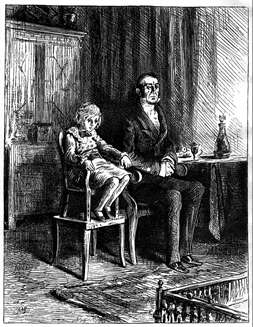
Young Paul Dombey and his father
Dombey and Son is the earliest novel of Dickens for which a complete set of working notes survives. Dickens called these notes “mems” which is short for memoranda. The mems allowed him to keep track of complicated plot lines and the many characters that populate his novels.
These working notes for Dombey and Son reveal that young Paul Dombey was doomed to die from the first moment that Dickens created him. Although he did live for one chapter longer than Dickens originally intended.
Walter Gay was originally intended to go bad was saved from that fate. Edith, the second Mrs. Dombey, was bound for adultery and death, but Dickens spared her character at the urgings of his friend Lord Jeffrey.


